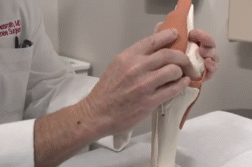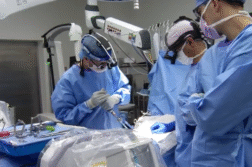CARMEL, Ind. (Ivanhoe Newswire) – Back pain is something many people deal with at some point in their lives. Severe cases often require surgery to fix the problem. Now, with the help of innovative technology, procedures on the spine are faster, less invasive, and overall better for the patient. Spine surgeries
Nancy Bielefeld loves to stay active.
“I love to go for walks. I love to go for hikes. I love to play tennis. I just picked up pickleball,” she tells Ivanhoe.
But severe pain in her lower back kept her off the court. After X-rays and an MRI, Nancy learned she had a deformity in her spine and severely pinched nerves. Surgery was her best option.
“You have to, not only un-pinch the nerves, but you have to rebuild that part of the spine as well,” explains Stephen Ritter, MD, an Orthopedic Spine Surgeon at Forté Sports Medicine and Orthopedics.
Dr. Ritter uses the Stryker’s Q Guidance System to visualize the surgery. It produces real-time, 3D models of a patient’s spine, allowing surgeons to operate through a small incision.
“Traditionally, with a big open surgery, you have to open the incision wide to be able to see the anatomy to repair what you need to repair. With these different technologies, you’re allowed to repair a lot of the structural problem without ever having to see the anatomy directly. You’re visualizing it on a screen,” Dr. Ritter explains.
He says, for his patients, a smaller incision means a lower risk of infection, less pain after surgery, and a shorter overall recovery time. Nancy’s surgery was a success. She’s now pain-free and, once again, able to enjoy the things she loves.
“I got my activity back, my really active lifestyle,” Nancy says with relief.
Dr. Ritter says this navigation technology, as a whole, can be used for many things. But he says this specific guidance system he uses is uniquely designed to help with spine surgeries because of its precise ability to target a certain area or bone during surgery.
Contributors to this news report include: Lindsay Dailey, Producer; Kyle Fisher, Videographer; Roque Correa, Editor.
To receive a free weekly e-mail on medical breakthroughs from Ivanhoe, sign up at: http://www.ivanhoe.com/ftk
MEDICAL BREAKTHROUGHS
RESEARCH SUMMARY
TOPIC: GUIDANCE TECHNOLOGY FOR SPINE SURGERIES
REPORT: MB #5280
BACKGROUND: Back pain is a common issue for a lot of Americans – approximately eight out of 10 people experience back pain. The U.S. population has spent over $630 billion on back pain treatments. Back pain can be caused by a variety of things, including poor posture, lack or exercise causing your spine to stiffen, or muscle strains/sprains. There are other conditions that can cause severe back pain, like: spondylosis, sciatica, spinal stenosis, and osteoporosis.
https://versusarthritis.org/about-arthritis/conditions/back-pain/)
DIAGNOSING: Symptoms of back pain can include, but aren’t limited to: being in pain for over a week, the pain trickles to other parts of the body, numbness or tingling, the pain worsens over time, bowel or urination issues, unexplained weight, and/or a fever. Doctors can diagnose back pain with a spine X-ray, an MRI, an EEG, a CT scan, or a blood or urine test.
(Sources: https://www.umms.org/health-services/spine/signs-symptoms
https://my.clevelandclinic.org/health/diseases/7936-lower-back-pain#diagnosis-and-tests)
NEW TECHNOLOGY: New technology to treat back pain is here! It’s called Stryker’s Q Guidance System. According to Medical Device Network, the device uses a high-tech camera to navigate and plan how to perform the spine surgery based on the patient’s spine. “To provide increased surgical planning and navigation capability, the system brings together new optical tracking options, offered by a redesigned camera, and the complex algorithms of the new Spine Guidance Software.”
(Source: https://www.medicaldevice-network.com/news/stryker-q-guidance-spine-guidance/?cf-view&cf-closed)
FOR MORE INFORMATION ON THIS REPORT, PLEASE CONTACT:
Rachel Hill Ponko Malia McGovern
rhillponko@gmail.com mmcgovern@forteortho.com
If this story or any other Ivanhoe story has impacted your life or prompted you or someone you know to seek or change treatments, please let us know by contacting Marjorie Bekaert Thomas at mthomas@ivanhoe.com



